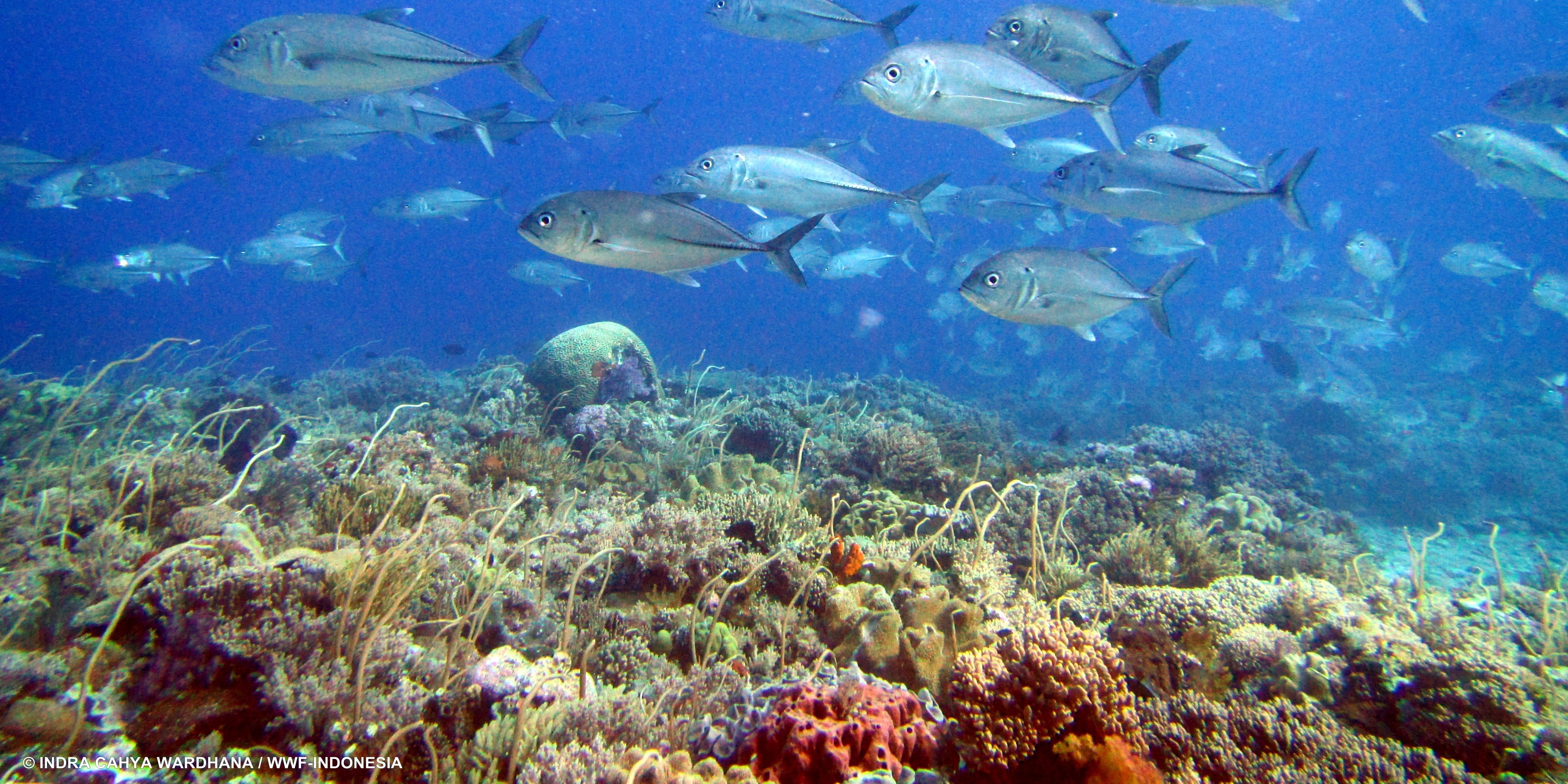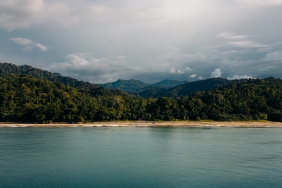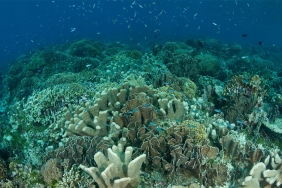#XPDCMBD NOTES: LUANG ISLAND (2)
Author: Nara Wisesa (WWF-Indonesia)
West Luang Village
West Luang village is also located on Luang Island, separated by a hill from East Luang. Both villages, West Luang and East Luang, share a 'meti'. However, the island cluster to the west of Luang is bisected by the two villages. The islands to the north, including Amartaun, are the territory of East Luang; while the islands to the south, including Meatimiarang, are the territory of West Luang.
The Land Team started moving at around 08:00 WIT. On the way we encountered a group of large dolphins, or possibly False Killer Whale (Pseudorca crassidens). When we reached the head of the reef, the water was still low and the speedboat was again struggling to find its way, plus this time there were no local fishermen to help guide us. After a long time, the speedboat managed to enter the 'methi' area and circled the island to reach West Luang Village. But once arrived in front of West Luang Village, the fast boat again faced problems with thick seagrass, so several times the engine had to be turned off and several members of the Land Team were forced to get off to help the Seven Seas crew push the fast boat.
Since arriving in West Luang, it is apparent that this village is a seaweed farming village. You can see rows of seaweed cultivation ropes and 'sampang' boats full of harvest. Seaweed drying areas can be found in almost every house in the village. Based on information from the village head, all 232 families in the village are seaweed farmers. Similar to Luang Timur Village, this makes fishing using fishing rods and nets more for daily food needs.
Villagers do seaweed seeding using their own methods. Previously, they tried to use seaweed seeds from Saumlaki, but they failed. Interestingly, the nursery was only successful after a resident found seaweed seeds drifting on a raft in the middle of the sea. Before the popularity of kotoni seaweed cultivation, traders, mostly from Makassar, came to the village to buy natural agar. Unfortunately, the price of dried seaweed has dropped dramatically in the past year, from IDR 12,500/kg in February 2015 to around IDR 6,000/kg. These buyers usually come with 5-7 boats at once.
Sadly, when walking towards the village official's house, there were several chunks of coral that had recently been taken from the sea and used as building materials. There were also rows of marinated sea products being dried, such as a fairly large parrot fish) and octopus.
Upon arrival at the home of the village official, it turned out that the Land Team had left too early for the village. Willy, the UPTD employee contacted by Kris (DKP Maluku Barat Daya) via local radio communication, had also just arrived at the house and had not had time to coordinate. The initial coordination was not maximized so the team had to go around and look for villagers themselves for activities. Fortunately, Willy and several other residents helped, so that finally the Land Team conducted focus group discussions, rapid mapping, and important informant interviews simultaneously in a hut under a very shady breadfruit tree.
In addition to the Land Team members, Very (WWF-Indonesia) was also present today. While all team members were conducting data collection, Very, who was touring the village, was invited by the teachers of West Luang Village Junior High School to be a guest speaker to the 9th grade students on knowledge about marine and fisheries conservation, and motivate the students to study hard and support conservation efforts in their village.
While the social and fisheries data collection was taking place, there were some faces, not typical of Maluku, observing the data collection process with suspicious looks. They turned out to be traders from Makassar who had come to buy seaweed and other marine products, including the results of open sasi. Because of the 'right to eat together' between West Luang Village and East Luang Village for the sasi area around Luang Island, the opening of sasi will be carried out by both villages simultaneously.
Another interesting feature of West Luang Village is its geologic profile. The day before, when the Land Team was collecting data in East Luang Village, it had already been seen that on the hill of Pulau Luang there were many large black stones. It turns out that in the West Luang Village area, the number of these stones is much greater and dominates. Even on some of the island's coasts, the piles of rocks reach the edge of the sea, like a former lava flow from the top of the hill to the sea.
On the way back to the Seven Seas ship by fast boat in the afternoon, the water conditions were high enough that the stretch of sandbar that blocked the Land Team's path in the morning was passable and turned into a beautiful vast expanse of white sand under shallow water.





